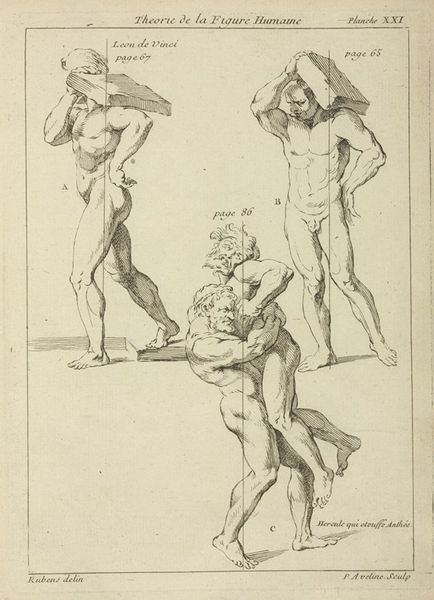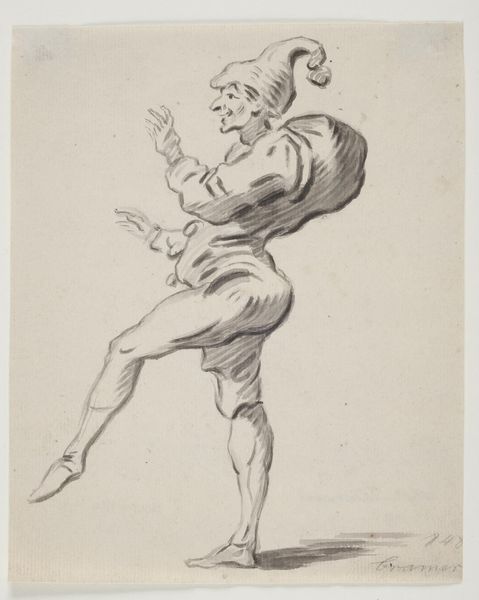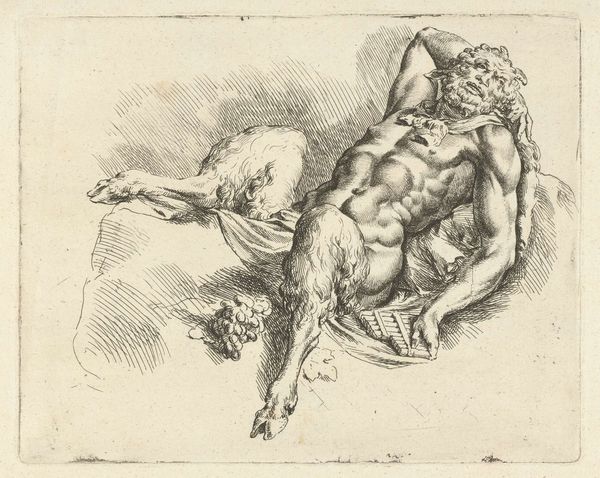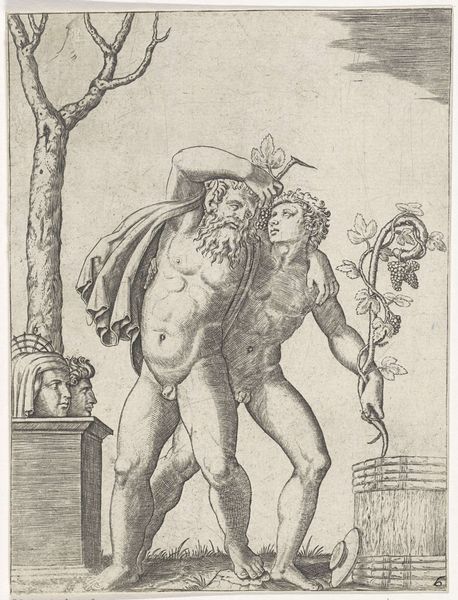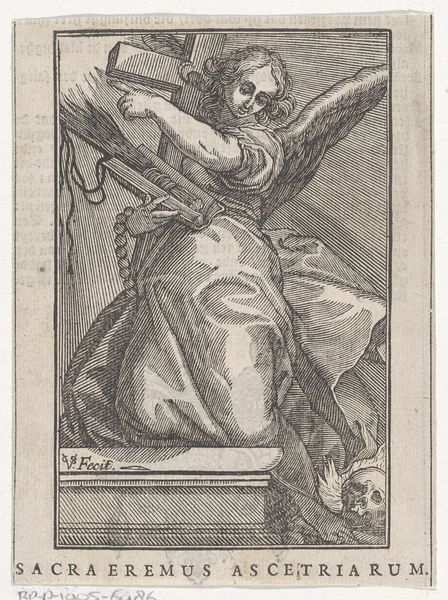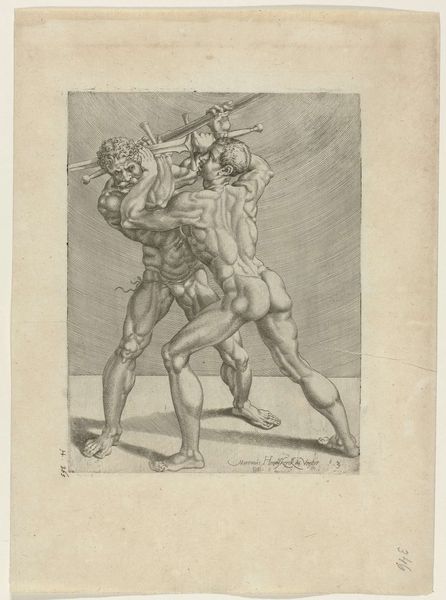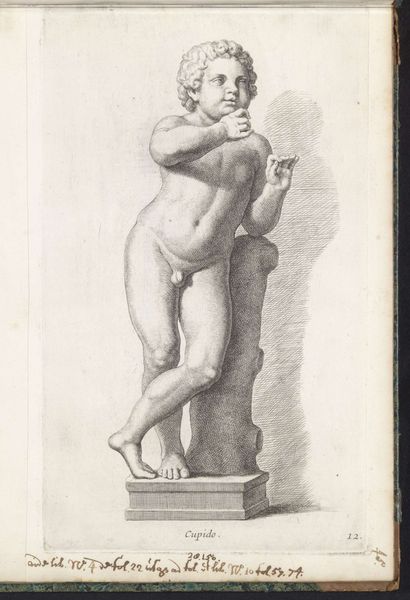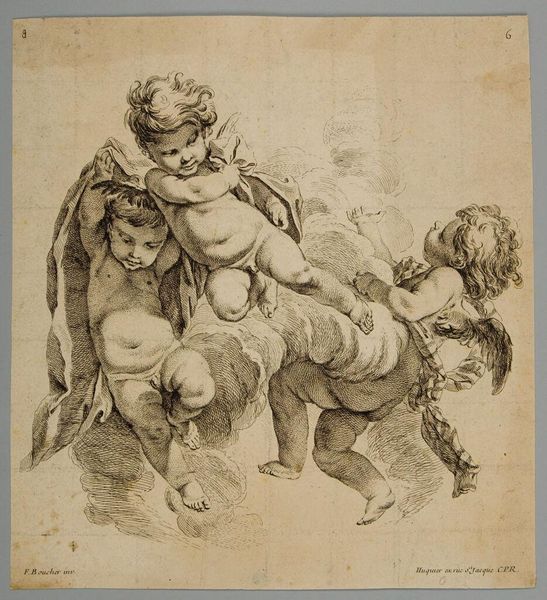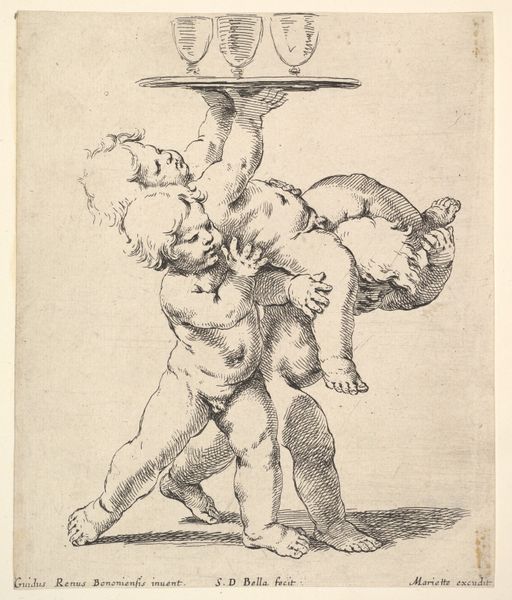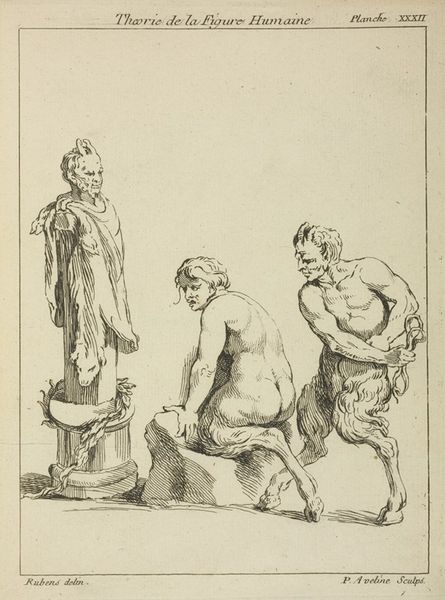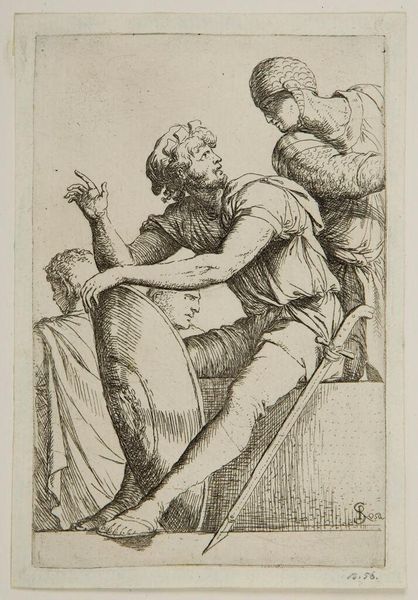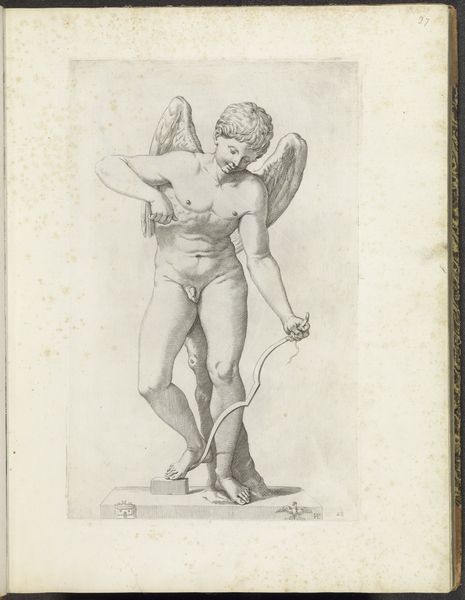
drawing, intaglio, paper, pen, engraving
#
drawing
#
light pencil work
#
baroque
#
intaglio
#
pencil sketch
#
figuration
#
paper
#
personal sketchbook
#
idea generation sketch
#
sketchwork
#
ink drawing experimentation
#
pen-ink sketch
#
sketchbook drawing
#
pen
#
history-painting
#
storyboard and sketchbook work
#
sketchbook art
#
engraving
Copyright: Public Domain: Artvee
Peter Paul Rubens made this drawing, "Head and torso of male stayr, and a female satyr," depicting classical mythological figures. In Rubens’s era, the 17th century, the revival of classical themes was often used to convey ideals of beauty and virtue. Here, we see a departure from traditional representations. Satyrs and other hybrid creatures were liminal beings, existing between human and animal realms. The female satyr, unlike more common depictions of nymphs or goddesses, complicates conventional beauty standards, introducing a figure that blends allure with the wild, untamed aspects of nature. Rubens's choice to focus on satyrs invites us to consider the cultural fascination and ambivalence towards figures that challenge the boundaries of identity and form. This exploration reflects a broader discourse on gender and identity, questioning the rigid categories that define human and animal, male and female. "Painting is my passion," Rubens once said, and through that passion, he prompts us to reflect on the emotional and psychological landscapes that shape our perceptions.
Comments
No comments
Be the first to comment and join the conversation on the ultimate creative platform.
